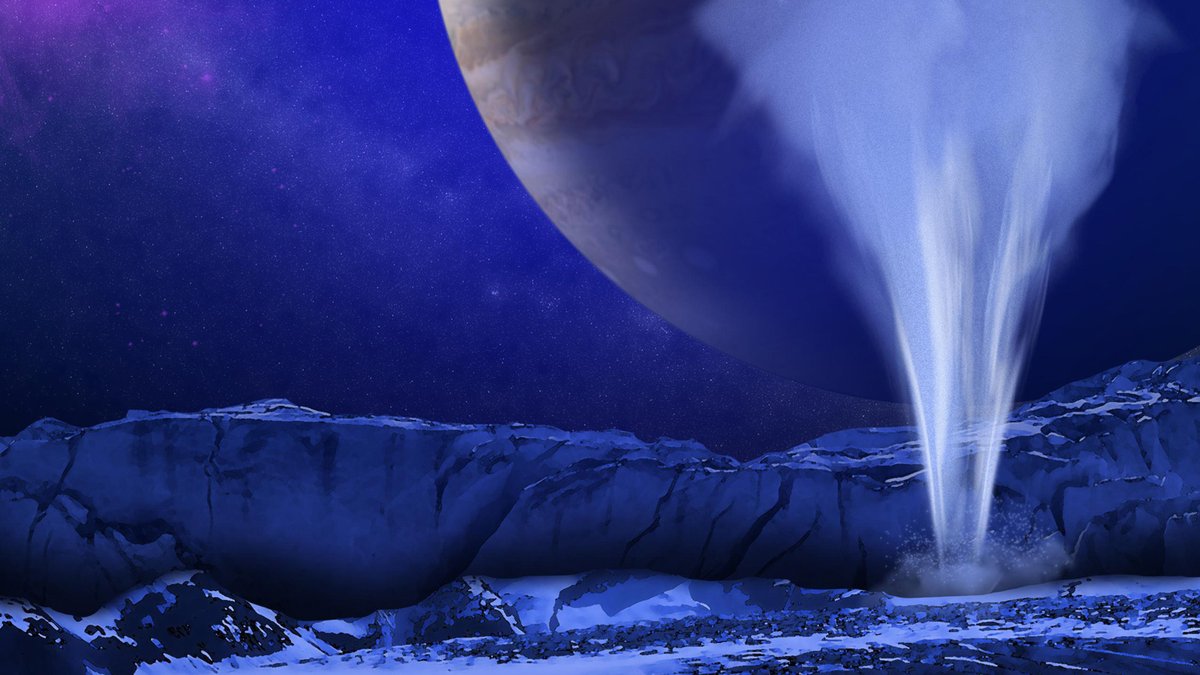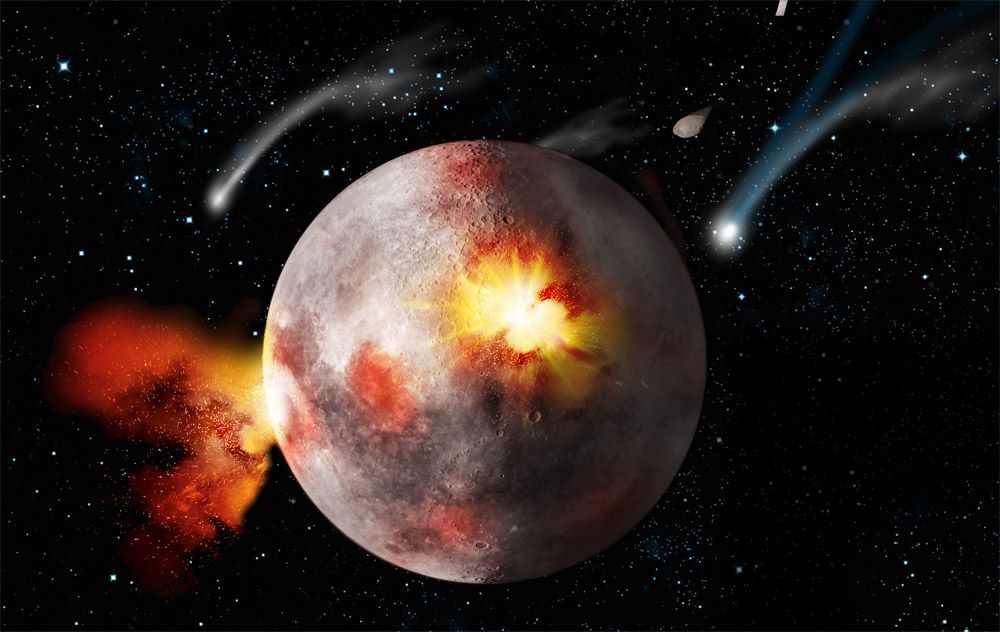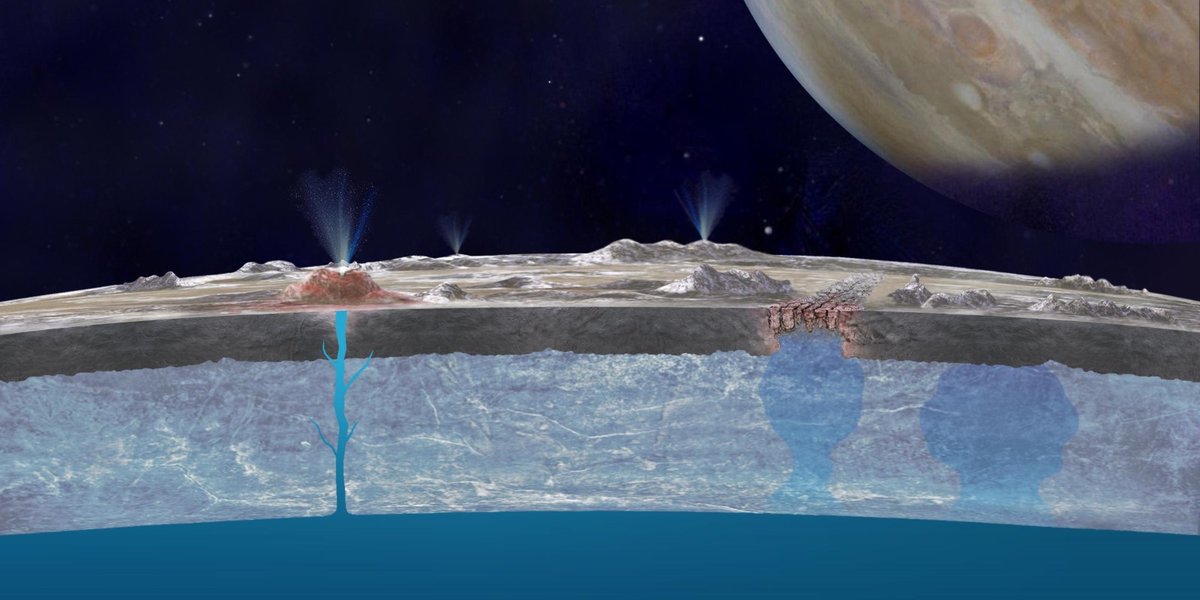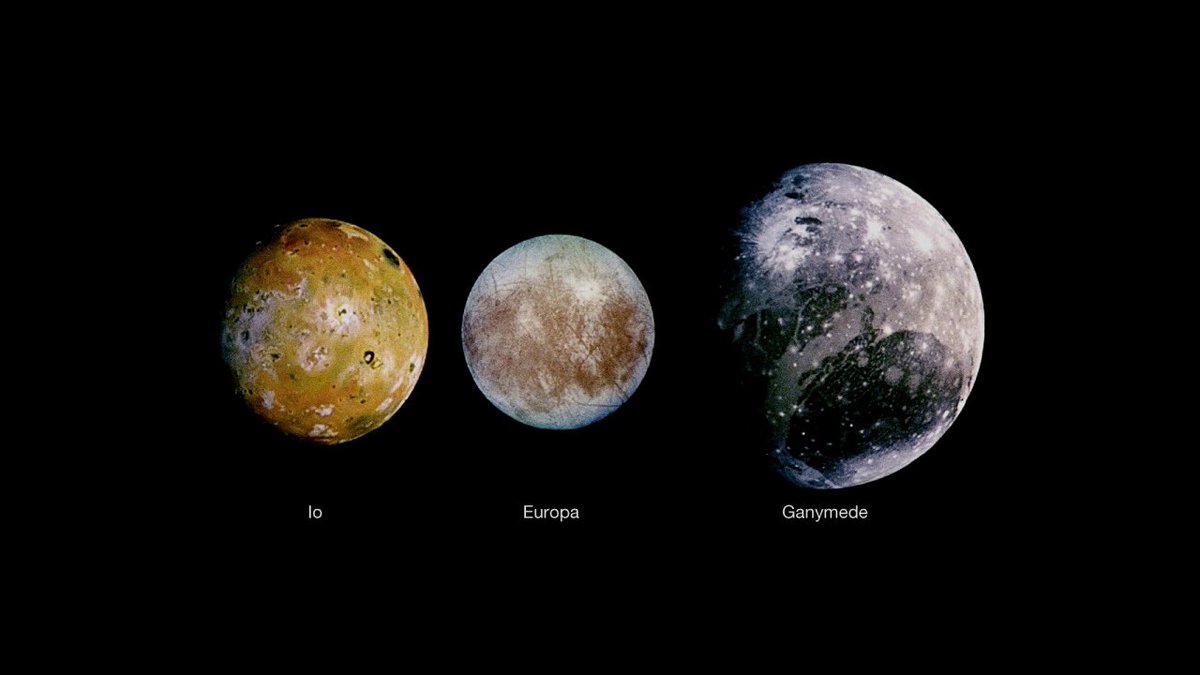Welcome to Day 1 of Ocean Worlds Week!
Today I'm going to be giving a quick introduction to what ocean worlds really are. How do they form? Why are they important? How do the oceans under a surface stay liquid? Keep reading to find out! #scicomm (1/14)
Today I'm going to be giving a quick introduction to what ocean worlds really are. How do they form? Why are they important? How do the oceans under a surface stay liquid? Keep reading to find out! #scicomm (1/14)
So, what is an ocean world? These are planetary bodies that have large amounts of liquid, usually water, either on their surface or under their surface. We're talking amounts of water similar to the amount we have here on Earth (which isn't as much as you think!). (2/14)
These planetary bodies are really important to study because liquid water is an essential component for the continuous search for life outside of Earth. Some popular candidates include three of the Galilean moons: Europa, Callisto, and Ganymede, two of Saturn's moons: ... (3/14)
...Enceladus and Titan, and many more exoplanets. Earlier this year, planetary scientists reported that exoplanets with oceans are really common in the Milky Way, a study led by Dr. Lynnae Quick at NASA Goddard. (Definitely recommend reading this!) https://www.nasa.gov/feature/goddard/2020/are-planets-with-oceans-common-in-the-galaxy-it-s-likely-nasa-scientists-find (4/14)
Alright so how exactly do these oceans form? Let us first talk about bodies with surface oceans, such as Earth. Earth is currently the only known planetary body that we for sure know has an ocean on its surface since we have yet to develop the tech to directly detect them. (5/14)
Our planet likely gained its water through asteroid and comet impacts during its early formation. These asteroids and comets would have volatile elements, such as hydrogen and oxygen, that would account for the vast amount of water our Earth has. Planetary scientists... (6/14)
...have tested this hypothesis by comparing the composition of the water in some asteroids and the composition of water here on Earth using meteorite samples. For other planets, it can be assumed that surface oceans would form in a similar method, though not confirmed. (7/14)
Now let us move onto subsurface oceans. It isn't exactly known or understood how they came to be (though if any planetary scientists who follow me have a good explanation, please reply!), but there is a mechanism that can explain how they currently exist and stay liquid! (8/14)
Tidal heating is a process that allows for heat to be created through gravitational forces and can explain in certain cases why a subsurface ocean can stay liquid. Let's start with using some of the Galilean moons as an example: Io, Europa, and Ganymede. (9/14)
So because of their proximity to each other, Io, Europa, and Ganymede affect each other’s orbits. They are in orbital resonance together, meaning that their orbital period can be related through a ratio of integers. For example, for every 2 orbits Io completes,... (10/14)
...Europa completes 1. For every 4 orbits Io completes, Ganymede completes 1. This gravitational pull on each other leads their orbits to be more elliptic than circular and because the moons are in an elliptical orbit around Jupiter, there will be some points where... (11/14)
...the individual moons will be closer to Jupiter than other points in their orbit. At these close approaches, Jupiter’s gravitational pull will slightly tug on the moon, distorting the planet by a bit and producing tides. Though when the moon's at its farthest approach...(12/14)
...it won’t be as distorted as before, and this cycle produces friction between all the rock within the moon, and this friction produces heat, leading to tidal heating. So, since all this water is able to stay liquid, the probability of life existing is a lot greater! (13/14)
So that is my introduction to ocean worlds! Tomorrow I will discuss how life could possibly exist within these extraterrestrial oceans (space whales??), so definitely make sure to check back for another thread! (14/14)
Question: Which ocean world is your favorite???
Question: Which ocean world is your favorite???

 Read on Twitter
Read on Twitter






